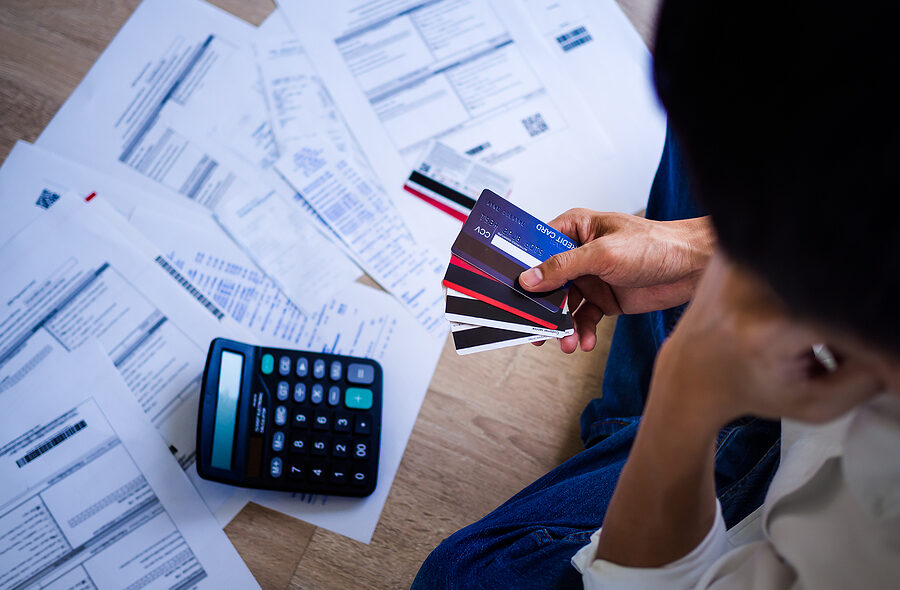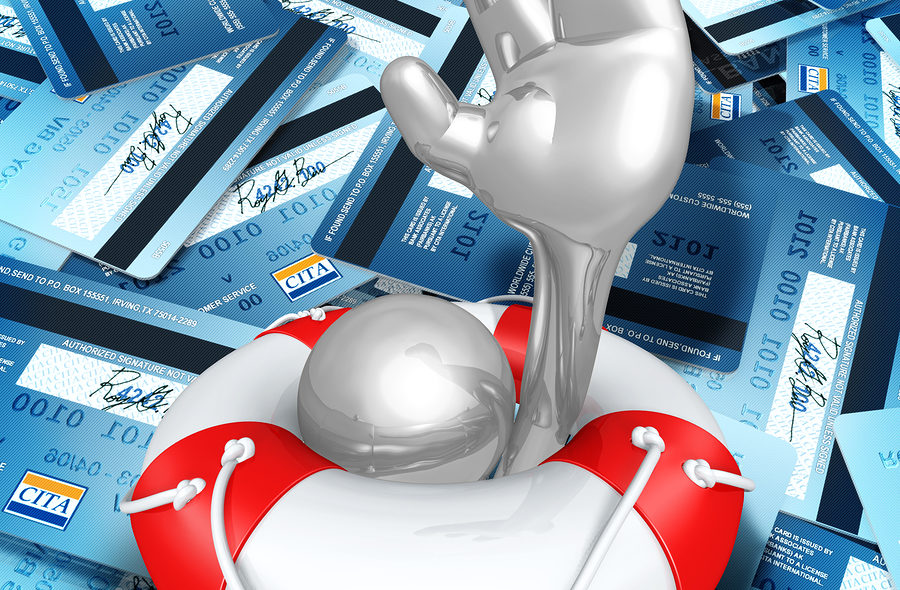Debt can cause a lot of problems in life. It can not only cause damage to your credit score, but it can also affect your emotional well-being, even your relationships. It can make the person feel like he or she is drowning with no possible relief in sight. Given the 126.2 million American households, the average household has around $8,161 in revolving debt, approximately $6,577 of which is credit card debt. With nearly 248 million Americans over the age of 18, that comes out to a total of $3,353 in credit card balances per US adult, according to cardrates.com.
Here are some steps to take to help manage and reduce your debt.
Step 1: Review Your Debt
The first step is to take an inventory of what type of debt you owe. This inventory can be done by creating a master list of what all is owed, from credit card debt to loans to medical bills. A person’s credit report can be the best source for getting a clean list of what is owed. For this list, write down the name of the creditor, how much owed on each bill, the minimum monthly payment, the payment due date, and the interest rate on the debt. This list will give you a good picture of what all is outstanding and how to then attack the debt.
Step 2: Decide How Much Can Be Paid
The next step before conquering the debt is to put together a monthly budget and decide how much can be paid towards the expenses. Add up all of your monthly costs, including living expenses, car, food, utilities, and any minimum payments on debts. Make sure to leave some wiggle room for unexpected expenses, such as emergencies that may arise. The remaining amount on your budget should be what you can put towards your debt repayment plan every month.
Step 3: Contact Creditors
Once you have determined how much you can pay towards your outstanding debts, the next step is to reach out to your creditors to discuss repayment. Many lenders are more than willing to work with debtors on a repayment plan or to even lower interest rates on outstanding obligations. See if any of them will negotiate with you on a debt repayment plan or will settle the debt for a flat amount. However, be cautious when negotiating debt settlement with third-party agencies, as scams exist to take advantage of those looking to get out of debt. If you cannot afford to pay the debt, tell the debt collector that. Never promise to pay an amount you cannot afford and never provide them with your bank account and routing information.
Step 4: Attack One Bill at a Time
Looking at all of those debts can seem daunting, but the best method is to often tackle one bill at a time. Taking the bill with the highest interest rate or the one with the smallest balance is best. By taking on the card with the highest interest rate, you can save yourself a great deal of money on interest payments. However, taking the smallest debt first can help give you some momentum in that you will feel a sense of accomplishment after paying off a debt completely in full. Once that first debt is tackled, take on the next debt and so on, until all of the outstanding debts are paid in full.
Step 5: Keep Paying on Other Bills
While you are paying off the targeted bill, it is important that you continue paying the minimum monthly payment on the other debts. In addition, keep paying the full amount that you decided would go towards your debt in your prepared budget. As you eliminate debt, simply put that extra money towards another debt, taking the snowball effect. This tactic will make it possible for you to pay off your debt quicker than you would if you only made the minimum payments on all of the accounts.
Step 6: Be Creative with Your Options
Staying disciplined to your plan is the best method for attacking the debt, but it also helps to be a little creative. For example, use your annual tax refund or a job bonus to pay down the debt or enlist the help of an experienced bankruptcy attorney to eliminate the debt. Try to come up with extra ways to earn money and use that extra income to go towards paying down debt.
As bankruptcy attorneys, we see credit card debt as one of the most common problems facing those with serious financial difficulties. It is not surprising with the high interest rates, unreasonable fees, harassing debt collection calls, penalties and never-ending minimum payments that do not even begin to make a dent in the actual debt owed. We offer additional tips for eliminating credit card debt on our blog.
Click here to read more.
If you have questions on this topic or are in financial crisis and considering filing for bankruptcy, contact an experienced Miami bankruptcy attorney who can advise you of all of your options. As an experienced CPA as well as a proven bankruptcy lawyer, Timothy Kingcade knows how to help clients take full advantage of the bankruptcy laws to protect their assets and get successful results. Since 1996 Kingcade Garcia McMaken has been helping people from all walks of life build a better tomorrow. Our attorneys’ help thousands of people every year take advantage of their rights under bankruptcy protection to restart, rebuild and recover. The day you hire our firm, we will contact your creditors to stop the harassment. You can also find useful consumer information on the Kingcade Garcia McMaken website at www.miamibankruptcy.com.



